Report: Public Health System of Vietnam and Australia Comparison
VerifiedAdded on 2022/12/12
|13
|734
|166
Report
AI Summary
This report provides an overview of public health systems, focusing on the organization, funding, and key elements of the systems in Vietnam and Australia. It explores the percentage of GDP spent on health, funding sources, and expenditures for public health services in Australia. The report then analyzes the WHO's key building blocks of a health system and examines the cost-benefit and cost-effectiveness analyses. The report concludes with a comparison of the two countries' health systems, highlighting strengths and weaknesses, and suggesting potential areas for improvement in Vietnam's public health system. The analysis includes discussions on universal health coverage, changes in technology, and demographic factors influencing health expenditures.

Table Of Content
INTRODUCTION
MAIN BODY
How the public health system is both organized and
funded
How Vietnam country performs in terms of WHO’s key
building blocks of health system
Potential health system for Vietnam country to improve
weaknesses in system
CONCLUSION
REFERENCES
INTRODUCTION
MAIN BODY
How the public health system is both organized and
funded
How Vietnam country performs in terms of WHO’s key
building blocks of health system
Potential health system for Vietnam country to improve
weaknesses in system
CONCLUSION
REFERENCES
Paraphrase This Document
Need a fresh take? Get an instant paraphrase of this document with our AI Paraphraser
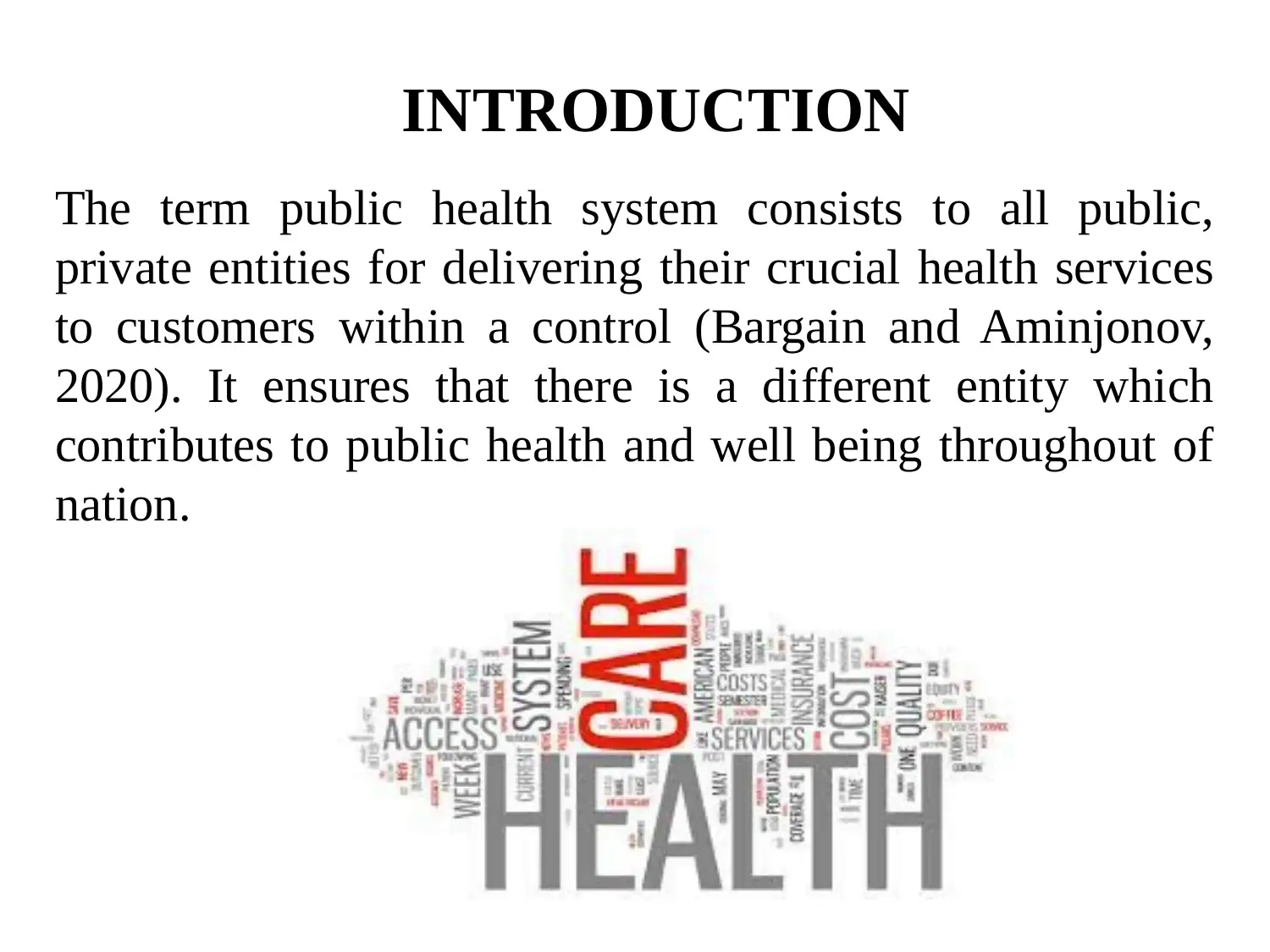
INTRODUCTION
The term public health system consists to all public,
private entities for delivering their crucial health services
to customers within a control (Bargain and Aminjonov,
2020). It ensures that there is a different entity which
contributes to public health and well being throughout of
nation.
The term public health system consists to all public,
private entities for delivering their crucial health services
to customers within a control (Bargain and Aminjonov,
2020). It ensures that there is a different entity which
contributes to public health and well being throughout of
nation.
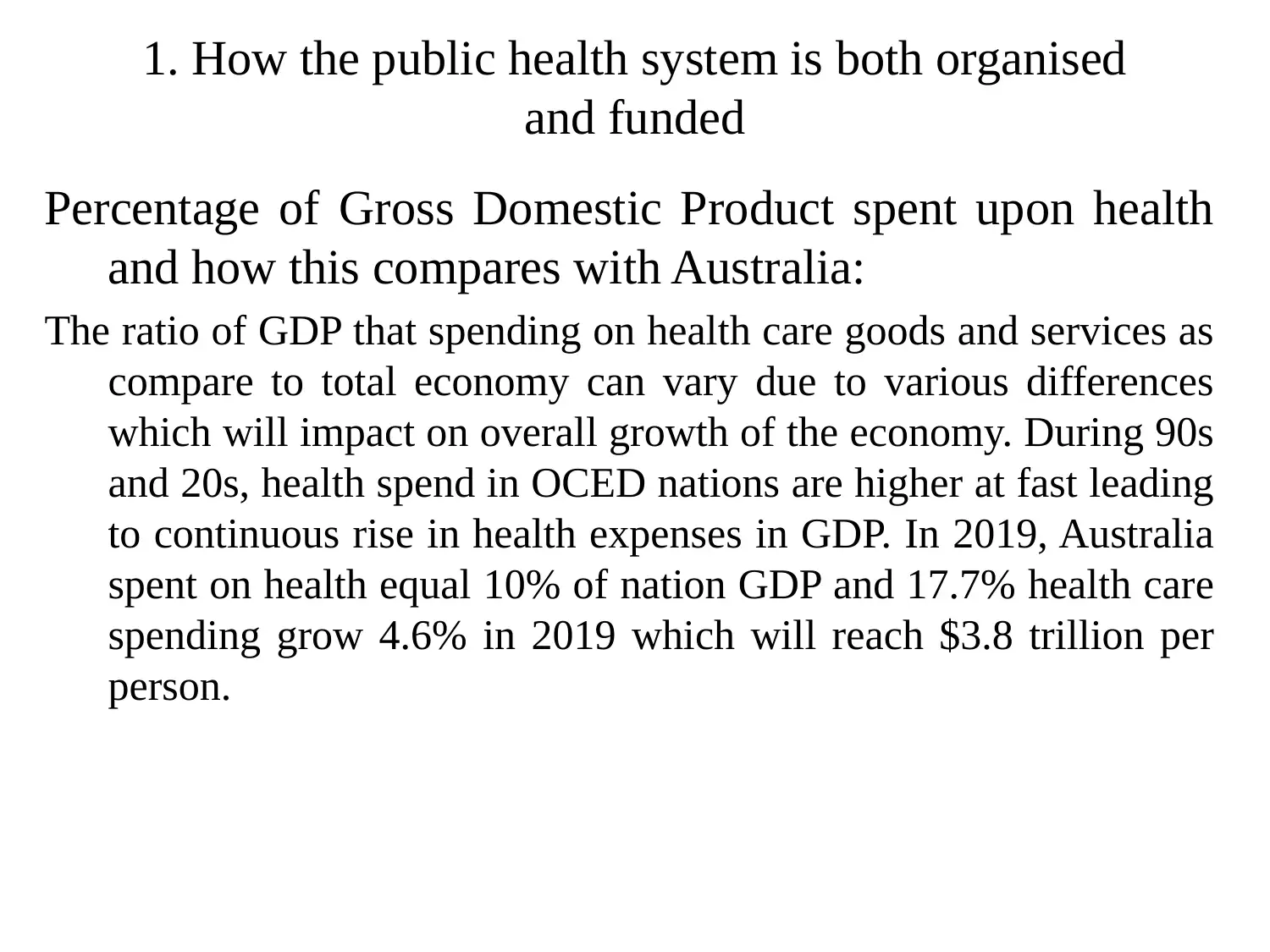
1. How the public health system is both organised
and funded
Percentage of Gross Domestic Product spent upon health
and how this compares with Australia:
The ratio of GDP that spending on health care goods and services as
compare to total economy can vary due to various differences
which will impact on overall growth of the economy. During 90s
and 20s, health spend in OCED nations are higher at fast leading
to continuous rise in health expenses in GDP. In 2019, Australia
spent on health equal 10% of nation GDP and 17.7% health care
spending grow 4.6% in 2019 which will reach $3.8 trillion per
person.
and funded
Percentage of Gross Domestic Product spent upon health
and how this compares with Australia:
The ratio of GDP that spending on health care goods and services as
compare to total economy can vary due to various differences
which will impact on overall growth of the economy. During 90s
and 20s, health spend in OCED nations are higher at fast leading
to continuous rise in health expenses in GDP. In 2019, Australia
spent on health equal 10% of nation GDP and 17.7% health care
spending grow 4.6% in 2019 which will reach $3.8 trillion per
person.
⊘ This is a preview!⊘
Do you want full access?
Subscribe today to unlock all pages.

Trusted by 1+ million students worldwide
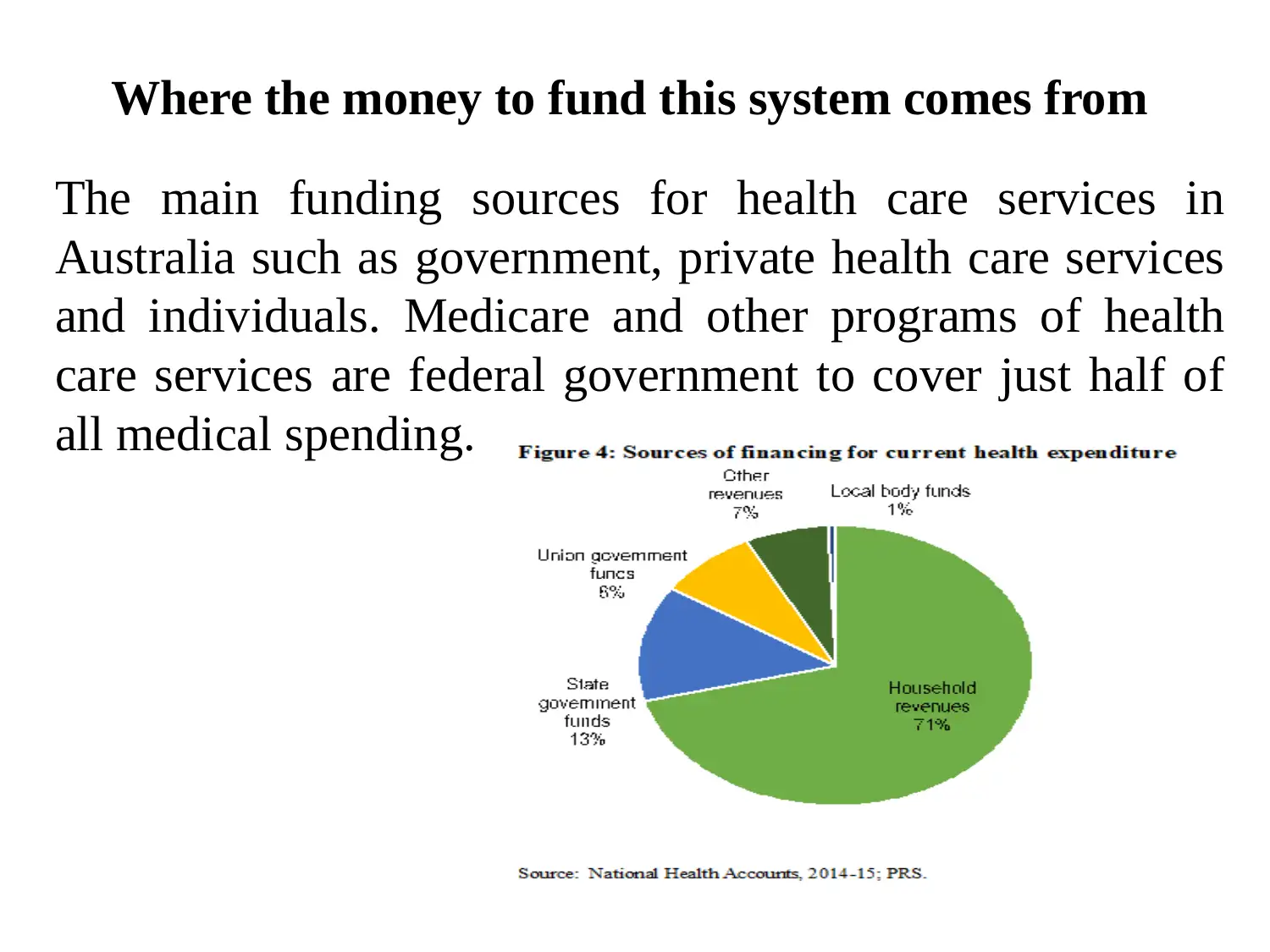
Where the money to fund this system comes from
The main funding sources for health care services in
Australia such as government, private health care services
and individuals. Medicare and other programs of health
care services are federal government to cover just half of
all medical spending.
The main funding sources for health care services in
Australia such as government, private health care services
and individuals. Medicare and other programs of health
care services are federal government to cover just half of
all medical spending.
Paraphrase This Document
Need a fresh take? Get an instant paraphrase of this document with our AI Paraphraser
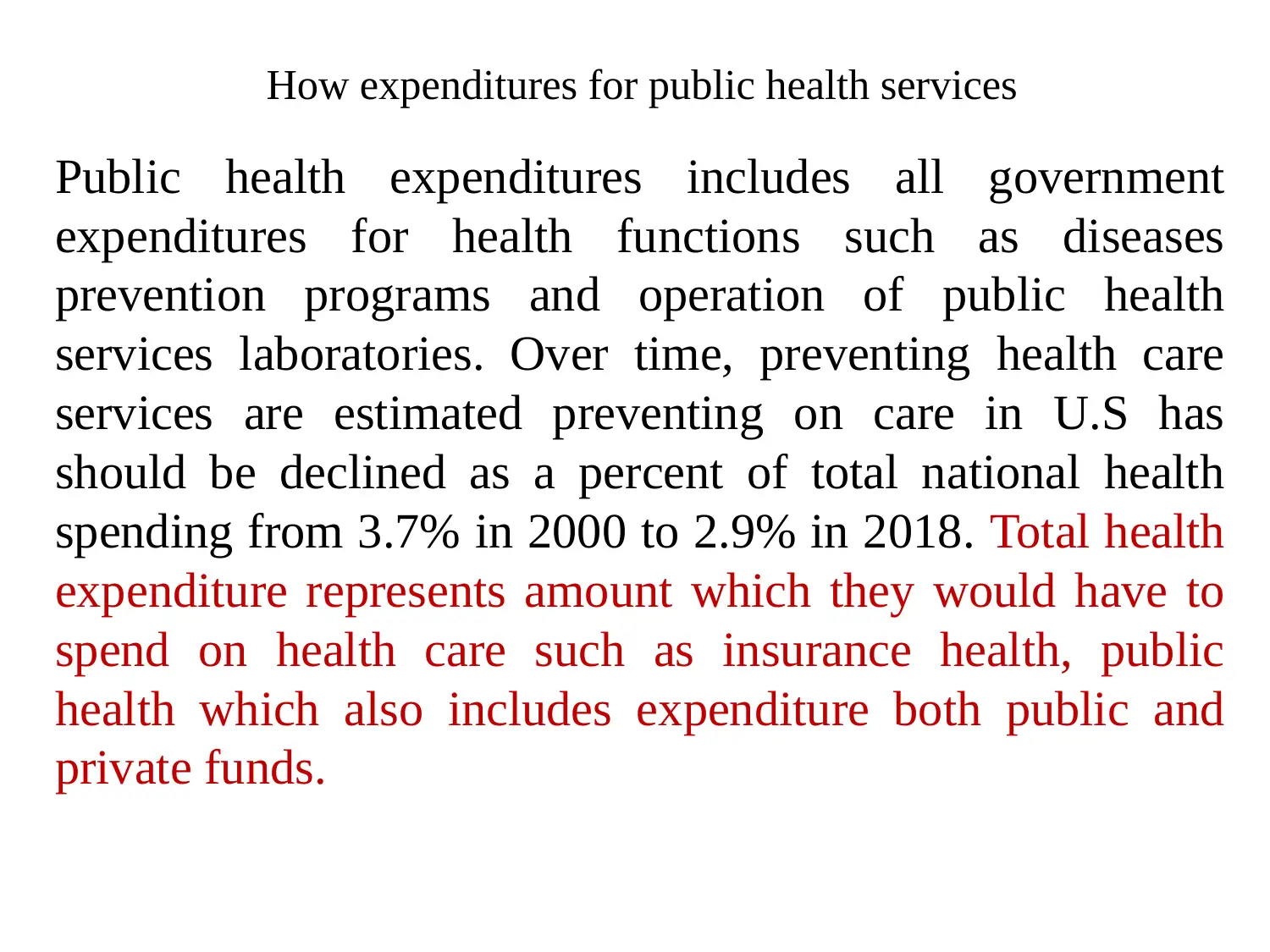
How expenditures for public health services
Public health expenditures includes all government
expenditures for health functions such as diseases
prevention programs and operation of public health
services laboratories. Over time, preventing health care
services are estimated preventing on care in U.S has
should be declined as a percent of total national health
spending from 3.7% in 2000 to 2.9% in 2018. Total health
expenditure represents amount which they would have to
spend on health care such as insurance health, public
health which also includes expenditure both public and
private funds.
Public health expenditures includes all government
expenditures for health functions such as diseases
prevention programs and operation of public health
services laboratories. Over time, preventing health care
services are estimated preventing on care in U.S has
should be declined as a percent of total national health
spending from 3.7% in 2000 to 2.9% in 2018. Total health
expenditure represents amount which they would have to
spend on health care such as insurance health, public
health which also includes expenditure both public and
private funds.
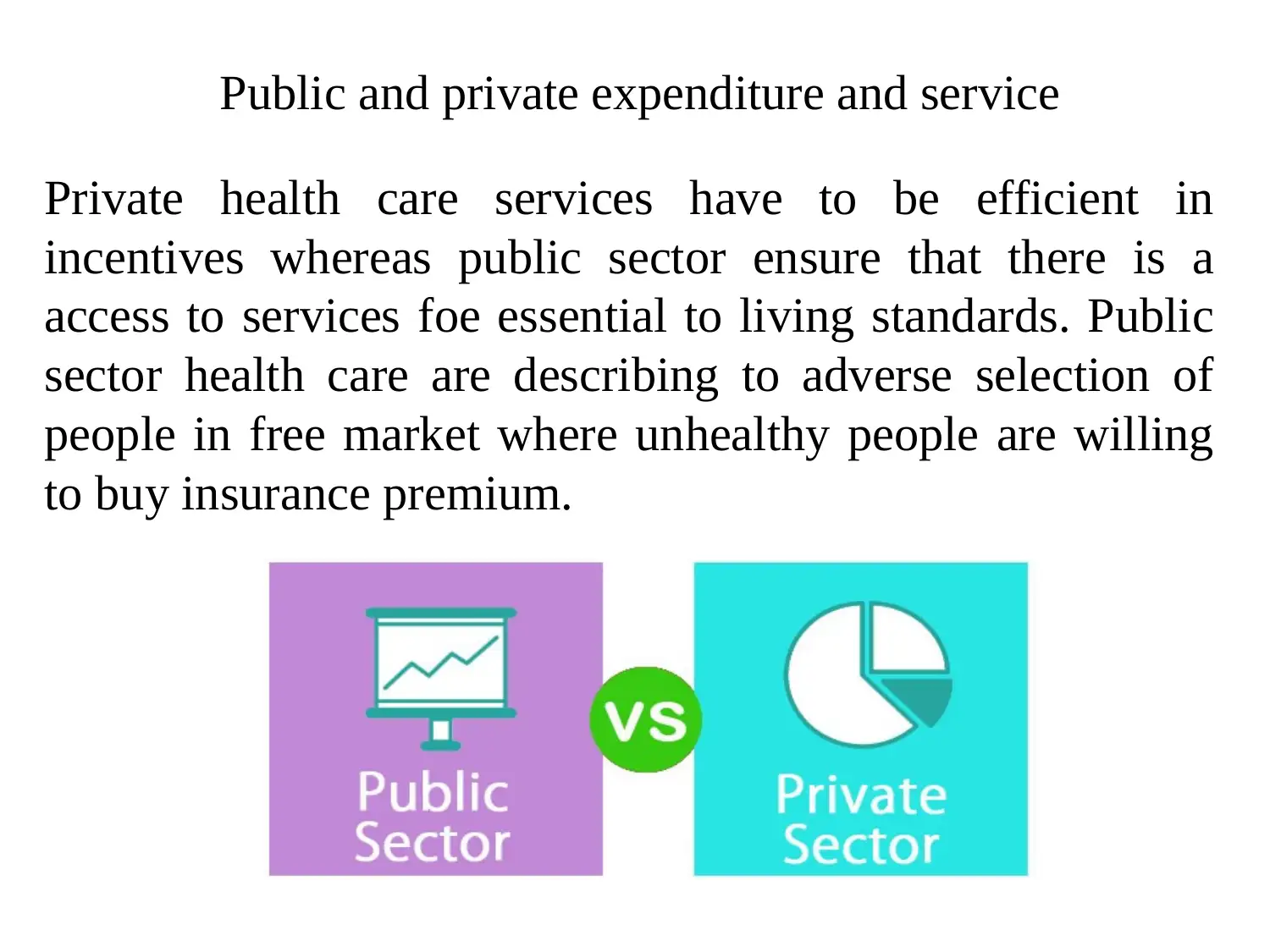
Public and private expenditure and service
Private health care services have to be efficient in
incentives whereas public sector ensure that there is a
access to services foe essential to living standards. Public
sector health care are describing to adverse selection of
people in free market where unhealthy people are willing
to buy insurance premium.
Private health care services have to be efficient in
incentives whereas public sector ensure that there is a
access to services foe essential to living standards. Public
sector health care are describing to adverse selection of
people in free market where unhealthy people are willing
to buy insurance premium.
⊘ This is a preview!⊘
Do you want full access?
Subscribe today to unlock all pages.

Trusted by 1+ million students worldwide
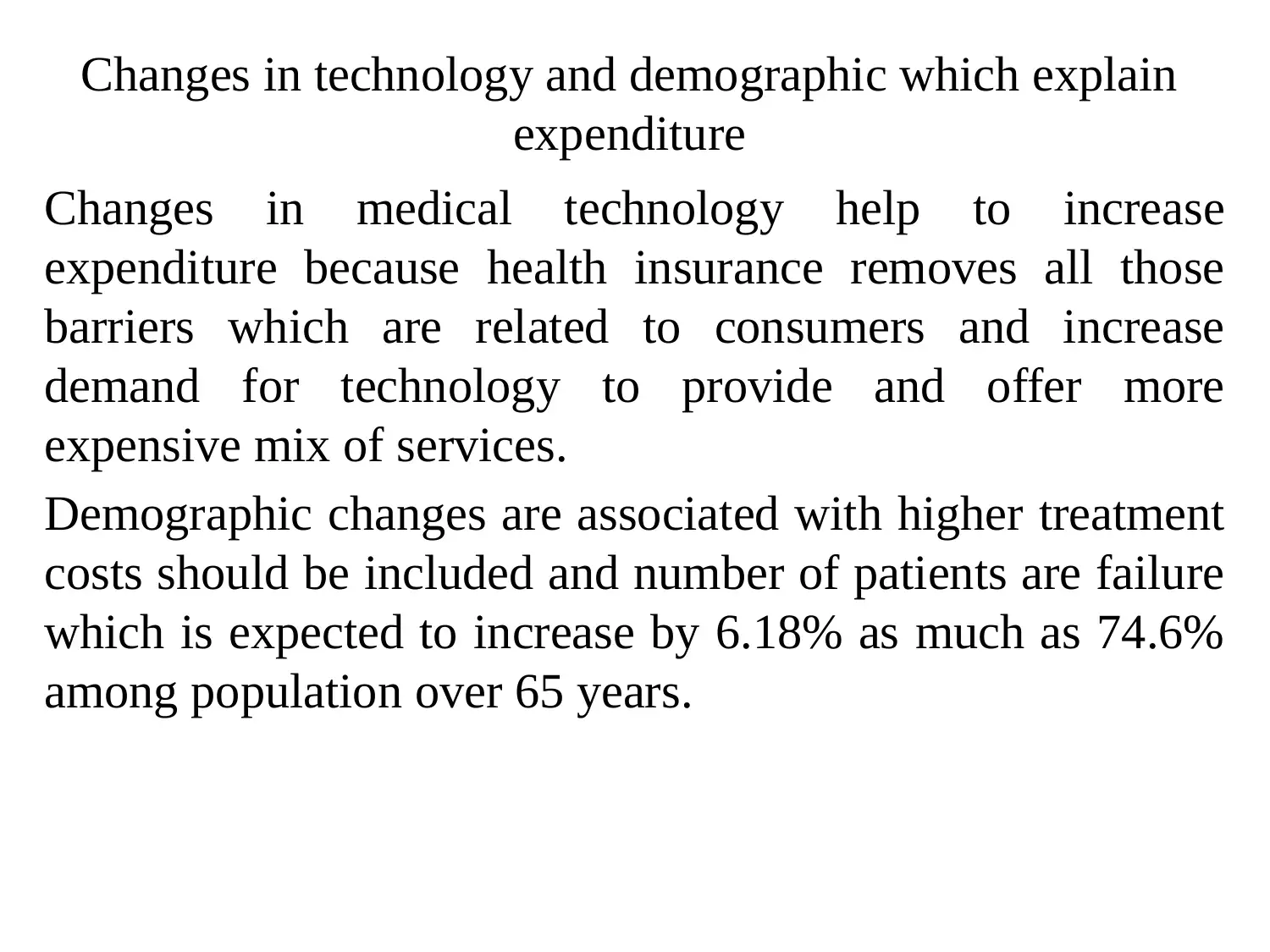
Changes in technology and demographic which explain
expenditure
Changes in medical technology help to increase
expenditure because health insurance removes all those
barriers which are related to consumers and increase
demand for technology to provide and offer more
expensive mix of services.
Demographic changes are associated with higher treatment
costs should be included and number of patients are failure
which is expected to increase by 6.18% as much as 74.6%
among population over 65 years.
expenditure
Changes in medical technology help to increase
expenditure because health insurance removes all those
barriers which are related to consumers and increase
demand for technology to provide and offer more
expensive mix of services.
Demographic changes are associated with higher treatment
costs should be included and number of patients are failure
which is expected to increase by 6.18% as much as 74.6%
among population over 65 years.
Paraphrase This Document
Need a fresh take? Get an instant paraphrase of this document with our AI Paraphraser
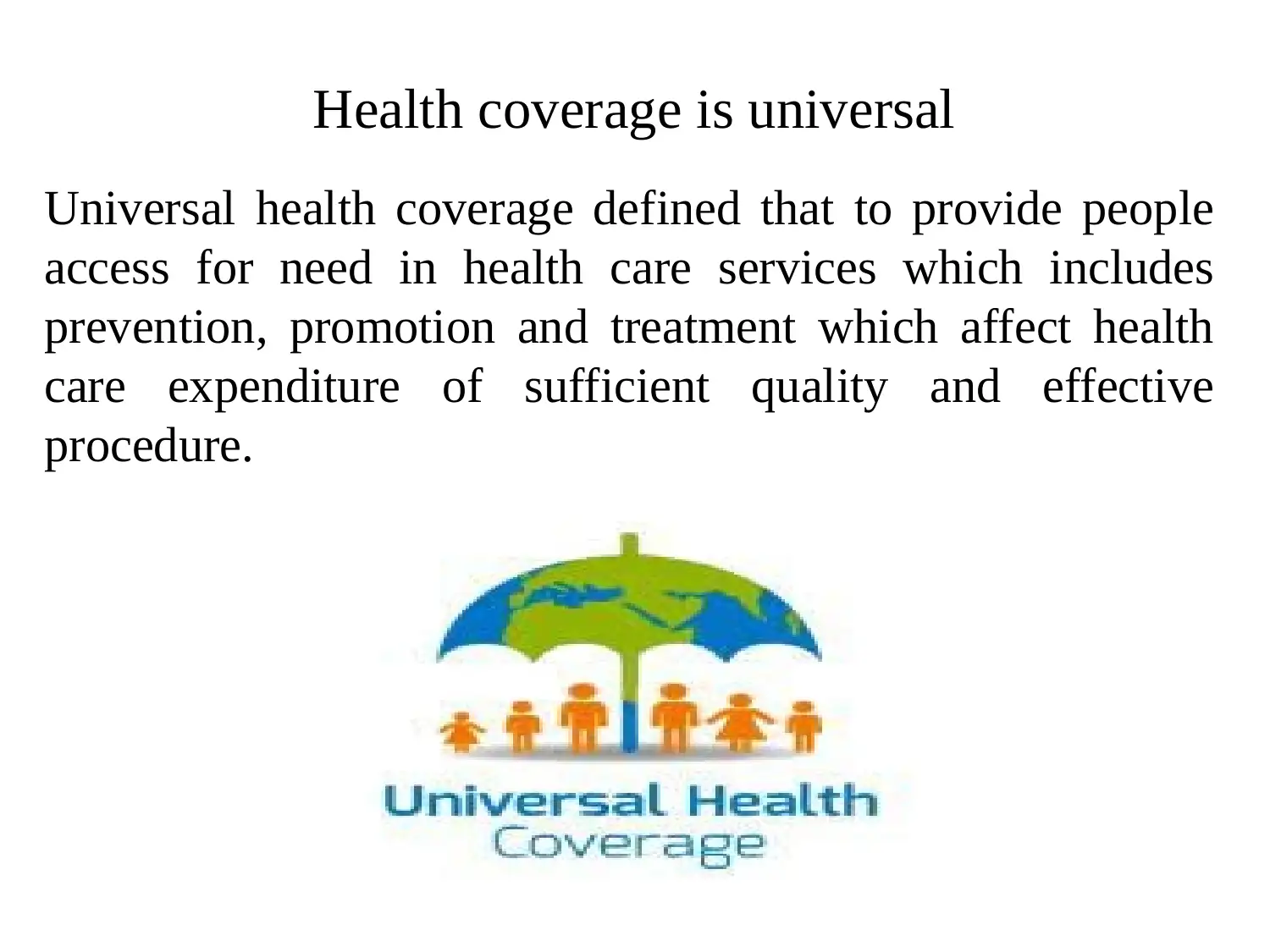
Health coverage is universal
Universal health coverage defined that to provide people
access for need in health care services which includes
prevention, promotion and treatment which affect health
care expenditure of sufficient quality and effective
procedure.
Universal health coverage defined that to provide people
access for need in health care services which includes
prevention, promotion and treatment which affect health
care expenditure of sufficient quality and effective
procedure.
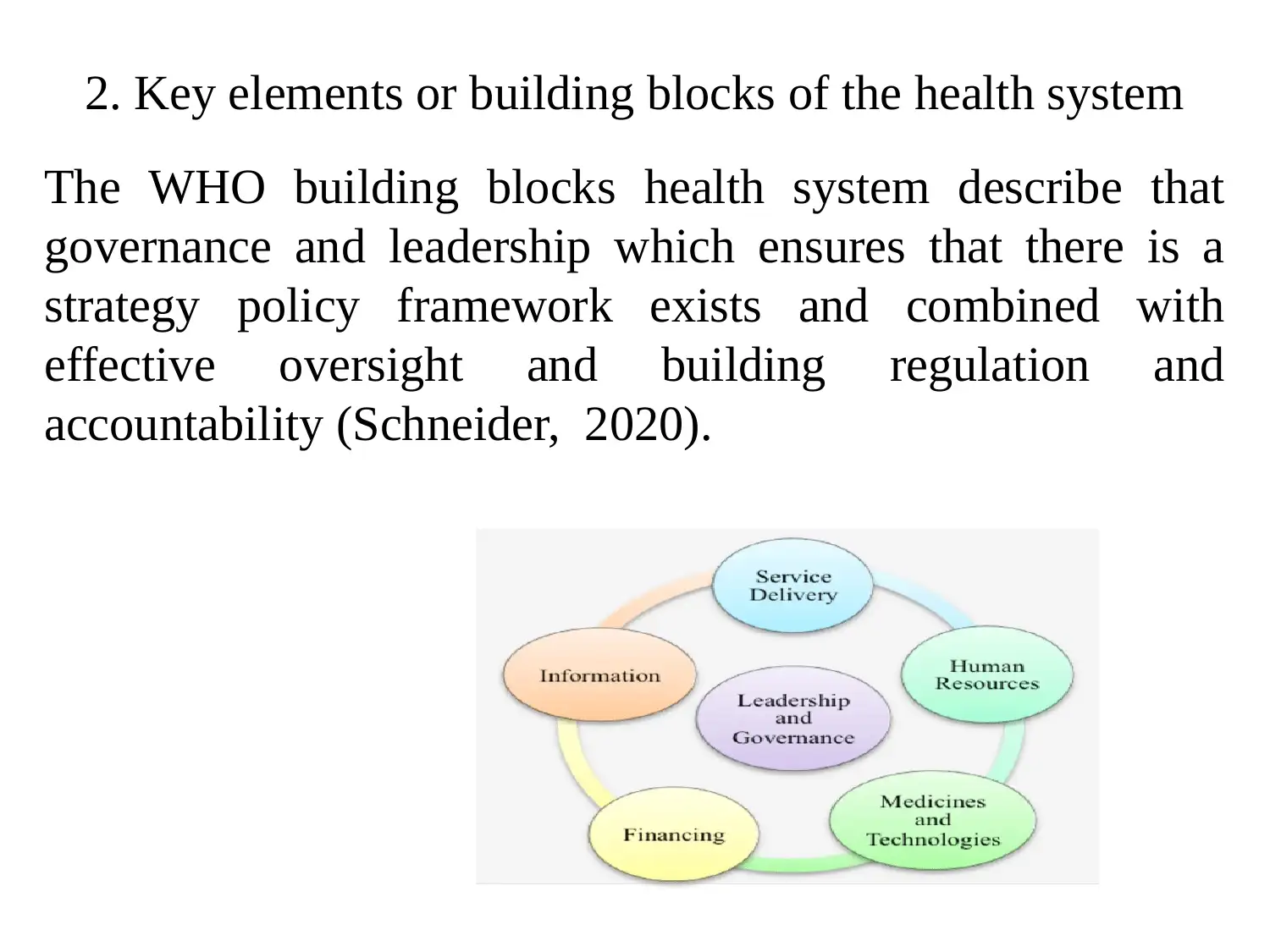
2. Key elements or building blocks of the health system
The WHO building blocks health system describe that
governance and leadership which ensures that there is a
strategy policy framework exists and combined with
effective oversight and building regulation and
accountability (Schneider, 2020).
The WHO building blocks health system describe that
governance and leadership which ensures that there is a
strategy policy framework exists and combined with
effective oversight and building regulation and
accountability (Schneider, 2020).
⊘ This is a preview!⊘
Do you want full access?
Subscribe today to unlock all pages.

Trusted by 1+ million students worldwide
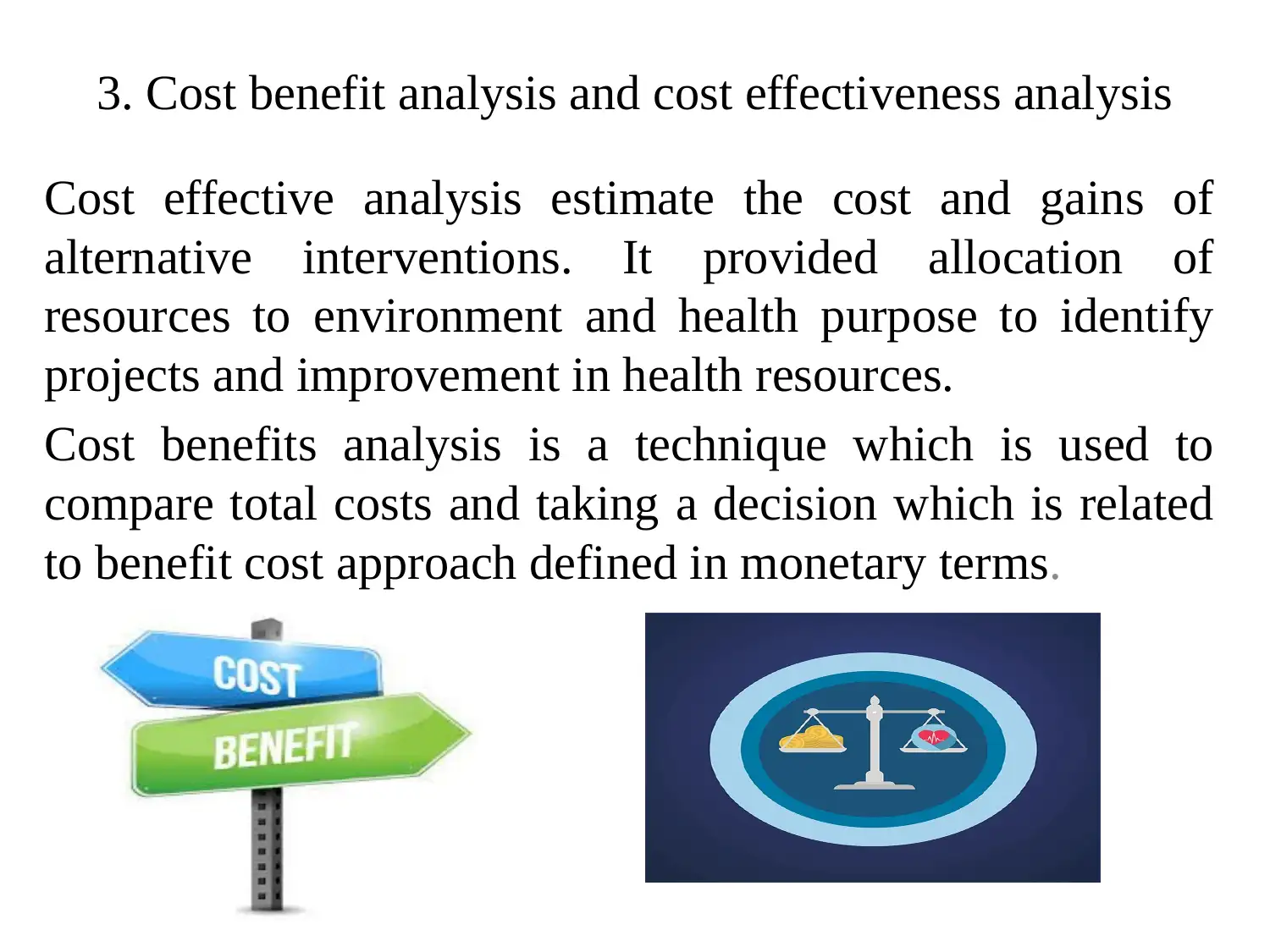
3. Cost benefit analysis and cost effectiveness analysis
Cost effective analysis estimate the cost and gains of
alternative interventions. It provided allocation of
resources to environment and health purpose to identify
projects and improvement in health resources.
Cost benefits analysis is a technique which is used to
compare total costs and taking a decision which is related
to benefit cost approach defined in monetary terms.
Cost effective analysis estimate the cost and gains of
alternative interventions. It provided allocation of
resources to environment and health purpose to identify
projects and improvement in health resources.
Cost benefits analysis is a technique which is used to
compare total costs and taking a decision which is related
to benefit cost approach defined in monetary terms.
Paraphrase This Document
Need a fresh take? Get an instant paraphrase of this document with our AI Paraphraser
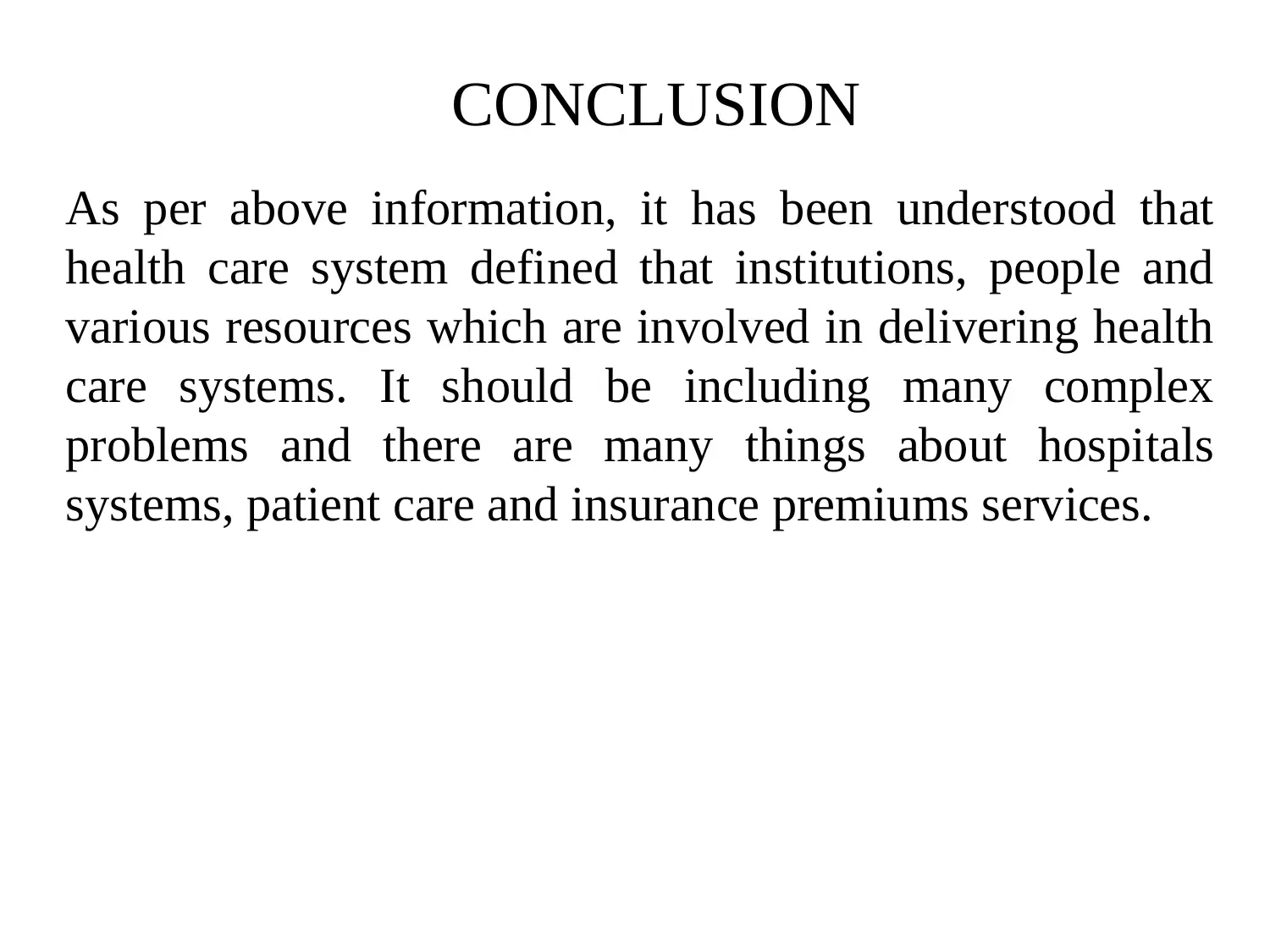
CONCLUSION
As per above information, it has been understood that
health care system defined that institutions, people and
various resources which are involved in delivering health
care systems. It should be including many complex
problems and there are many things about hospitals
systems, patient care and insurance premiums services.
As per above information, it has been understood that
health care system defined that institutions, people and
various resources which are involved in delivering health
care systems. It should be including many complex
problems and there are many things about hospitals
systems, patient care and insurance premiums services.
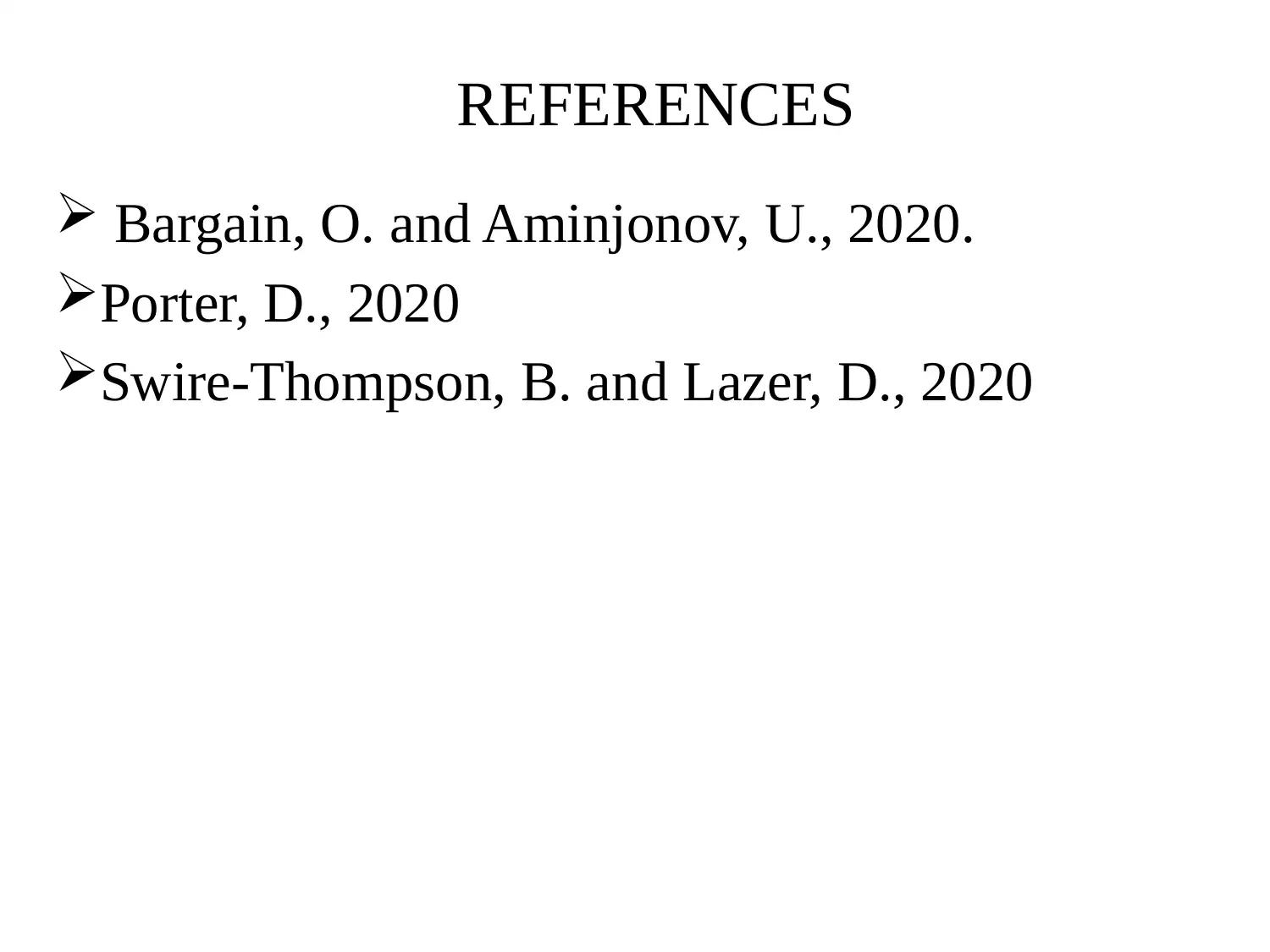
REFERENCES
Bargain, O. and Aminjonov, U., 2020.
Porter, D., 2020
Swire-Thompson, B. and Lazer, D., 2020
Bargain, O. and Aminjonov, U., 2020.
Porter, D., 2020
Swire-Thompson, B. and Lazer, D., 2020
⊘ This is a preview!⊘
Do you want full access?
Subscribe today to unlock all pages.

Trusted by 1+ million students worldwide
1 out of 13
Related Documents
Your All-in-One AI-Powered Toolkit for Academic Success.
+13062052269
info@desklib.com
Available 24*7 on WhatsApp / Email
![[object Object]](/_next/static/media/star-bottom.7253800d.svg)
Unlock your academic potential
Copyright © 2020–2025 A2Z Services. All Rights Reserved. Developed and managed by ZUCOL.





